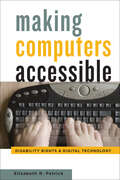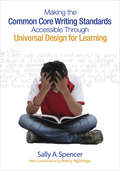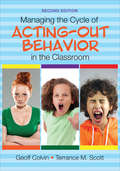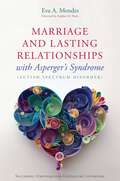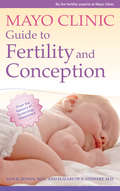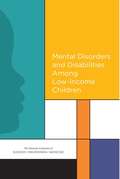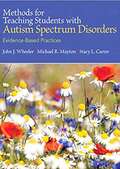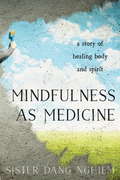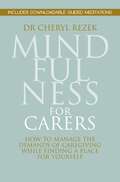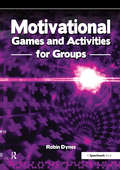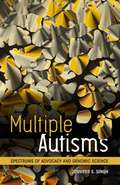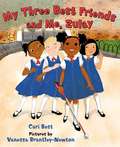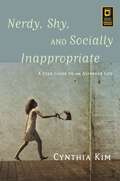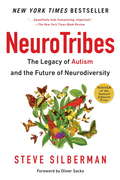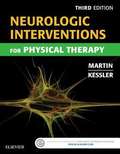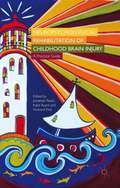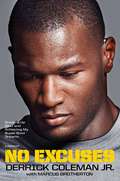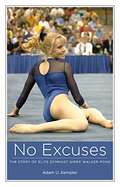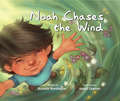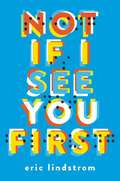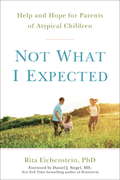- Table View
- List View
Making Computers Accessible: Disability Rights and Digital Technology
by Elizabeth R. PetrickThe revolution in accessible computer technology was fueled by disability activism, the interactive nature of personal computers, and changing public policy.In 1974, not long after developing the first universal optical character recognition technology, Raymond Kurzweil struck up a conversation with a blind man on a flight. Kurzweil explained that he was searching for a use for his new software. The blind man expressed interest: One of the frustrating obstacles that blind people grappled with, he said, was that no computer program could translate text into speech. Inspired by this chance meeting, Kurzweil decided that he must put his new innovation to work to "overcome this principal handicap of blindness." By 1976, he had built a working prototype, which he dubbed the Kurzweil Reading Machine.This type of innovation demonstrated the possibilities of computers to dramatically improve the lives of people living with disabilities. In Making Computers Accessible, Elizabeth R. Petrick tells the compelling story of how computer engineers and corporations gradually became aware of the need to make computers accessible for all people. Motivated by user feedback and prompted by legislation such as the Americans with Disabilities Act, which offered the promise of equal rights via technological accommodation, companies developed sophisticated computerized devices and software to bridge the accessibility gap. People with disabilities, Petrick argues, are paradigmatic computer users, demonstrating the personal computer’s potential to augment human abilities and provide for new forms of social, professional, and political participation. Bridging the history of technology, science and technology studies, and disability studies, this book traces the psychological, cultural, and economic evolution of a consumer culture aimed at individuals with disabilities, who increasingly rely on personal computers to make their lives richer and more interconnected.
Making the Common Core Writing Standards Accessible Through Universal Design for Learning
by Sally A. SpencerUnlock hidden writing skills in all learners through UDL! The Common Core State Standards (CCSS) for writing are promising but present a host of challenges in implementation, especially for struggling students. In this valuable resource, Sally A. Spencer demonstrates the potential of Universal Design for Learning (UDL) as a framework for making the CCSS writing and language standards accessible to all kids. Educators who utilize these strategies will know: How to leverage the strengths of students to optimize writing instruction and overcome their weaknesses The ways UDL can minimize the roadblocks in CCSS implementation How to - and how not to - use technology to teach writing and language conventions With dozens of classroom-ready activities, resources for further reading, and reproducibles, this easy-to-use guide will help you make all students proficient writers. "This is the ultimate guide to successful UDL implementation, with ready-to- use activities and resources that support the Common Core Writing Standards for students in all grades. Energize your classroom with this practical guide that engages all learners and helps you plan your lessons with ease. This is a must-have for all teachers!" —Renee Bernhardt, Ed.S Curriculum and Instruction-Learning Support Cherokee County School District Canton, GA "This is one of the most relatable and relevant teaching books I have read. It is packed with practical ideas, solid background information, and several resources. It is perfect for any teacher struggling to help students with a variety of needs achieve the goals set by the CCSS." —Kristin Striebel, Teacher Francis Howell School District St. Charles, MO
Making the Common Core Writing Standards Accessible Through Universal Design for Learning
by Sally A. SpencerUnlock hidden writing skills in all learners through UDL! The Common Core State Standards (CCSS) for writing are promising but present a host of challenges in implementation, especially for struggling students. In this valuable resource, Sally A. Spencer demonstrates the potential of Universal Design for Learning (UDL) as a framework for making the CCSS writing and language standards accessible to all kids. Educators who utilize these strategies will know: How to leverage the strengths of students to optimize writing instruction and overcome their weaknesses The ways UDL can minimize the roadblocks in CCSS implementation How to - and how not to - use technology to teach writing and language conventions With dozens of classroom-ready activities, resources for further reading, and reproducibles, this easy-to-use guide will help you make all students proficient writers. "This is the ultimate guide to successful UDL implementation, with ready-to- use activities and resources that support the Common Core Writing Standards for students in all grades. Energize your classroom with this practical guide that engages all learners and helps you plan your lessons with ease. This is a must-have for all teachers!" —Renee Bernhardt, Ed.S Curriculum and Instruction-Learning Support Cherokee County School District Canton, GA "This is one of the most relatable and relevant teaching books I have read. It is packed with practical ideas, solid background information, and several resources. It is perfect for any teacher struggling to help students with a variety of needs achieve the goals set by the CCSS." —Kristin Striebel, Teacher Francis Howell School District St. Charles, MO
Managing the Cycle of Acting-Out Behavior in the Classroom
by Terrance M. Scott Geoffrey T. ColvinMinimize problem behavior and maximize student success! Acting-out behavior by students manifests in ways that make classroom management and teaching very challenging. Building on a model using seven phases of acting-out behavior presented in the first edition, the newly updated edition draws on new research in applied behavior analysis, sound instructional principles, and functional behavior assessment to deliver a clear roadmap for educators to design interventions in a clear, systematic, and achievable matter. Features include: Managing each phase of the acting-out cycle—from structuring the classroom, to handling escalated behavior, to recovery Case studies that distill concrete action steps from the book’s concepts Checklists, tools, resources, and templates for applying the book’s principles to any classroom
Managing the Cycle of Acting-Out Behavior in the Classroom
by Terrance M. Scott Geoffrey T. ColvinMinimize problem behavior and maximize student success! Acting-out behavior by students manifests in ways that make classroom management and teaching very challenging. Building on a model using seven phases of acting-out behavior presented in the first edition, the newly updated edition draws on new research in applied behavior analysis, sound instructional principles, and functional behavior assessment to deliver a clear roadmap for educators to design interventions in a clear, systematic, and achievable matter. Features include: Managing each phase of the acting-out cycle—from structuring the classroom, to handling escalated behavior, to recovery Case studies that distill concrete action steps from the book’s concepts Checklists, tools, resources, and templates for applying the book’s principles to any classroom
Marriage and Lasting Relationships with Asperger's Syndrome (Autism Spectrum Disorder): Successful Strategies for Couples or Counselors
by Stephen M. Shore Eva A. MendesProven counseling strategies that will help improve the relationships of married, long-term or co-habiting couples with Asperger's Syndrome (Autism Spectrum Disorder). ASD relationship expert Eva A. Mendes provides advice straight from the couples' counselling room that can be applied in day-to-day living and help with the challenges that can arise in relationships where one or both partners are on the autism spectrum. This includes issues surrounding diagnosis, mental health, sexual compatibility, sensory needs, executive functioning, theory of mind, communication, and co-parenting. She offers unique practical ideas for positive change such as creating a relationship schedule, making expression of appreciation and gratitude a part of every day, and finding mutually satisfying activities and special interests to engage in with your partner. The strategies in this book will be useful to couples themselves and any couples' counselors or therapists working with them.
Mayo Clinic Guide to Fertility and Conception
by Elizabeth A. Stewart Jani R. JensenMayo Clinic Guide to Fertility and Conception is a comprehensive medical reference that provides answers and explanations to questions and concerns related to fertility, and potential solutions for those having difficulty conceiving or maintaining pregnancy. Deciding to start or build your family is a life-changing decision. Maybe you recently decided to try to become pregnant, or perhaps it&’s something you&’ve been contemplating for a while. But once the decision is made, there&’s a whole new set of unknowns, including whether the journey will be easy or difficult. You may already have a lot of questions: How can you increase your chances of becoming pregnant? What health and lifestyle changes should you make to have a healthy pregnancy? And if you&’re struggling to become pregnant, what medical treatments are available? Where can you get emotional support if you can&’t get pregnant or if you&’ve had a miscarriage? And when is enough? The fertility experts at Mayo Clinic want to offer you the answers to these questions and more. Through the pages of this book, they&’ll guide you through the process of trying for—and achieving—a successful pregnancy. You will also hear throughout the book from couples and individuals who have struggled to have a family. For a variety of reasons—health conditions, unexplained infertility or life circumstances—getting pregnant or deciding to have a family was difficult for them. These personal stories are to let you know that you&’re not alone in your journey, and to give you hope that with time and patience, pregnancy is often possible. From lifestyle and dietary recommendations to understanding your ovulatory cycle to medications and procedures that can improve fertility, this book is a comprehensive source of answers from Mayo Clinic experts you can rely on.
Mental Disorders and Disabilities Among Low-Income Children
by Thomas F. BoatChildren living in poverty are more likely to have mental health problems, and their conditions are more likely to be severe. Of the approximately 1. 3 million children who were recipients of Supplemental Security Income (SSI) disability benefits in 2013, about 50% were disabled primarily due to a mental disorder. An increase in the number of children who are recipients of SSI benefits due to mental disorders has been observed through several decades of the program beginning in 1985 and continuing through 2010. Nevertheless, less than 1% of children in the United States are recipients of SSI disability benefits for a mental disorder. At the request of the Social Security Administration, "Mental Disorders and Disability Among Low-Income Children" compares national trends in the number of children with mental disorders with the trends in the number of children receiving benefits from the SSI program, and describes the possible factors that may contribute to any differences between the two groups. This report provides an overview of the current status of the diagnosis and treatment of mental disorders, and the levels of impairment in the U. S. population under age 18. The report focuses on 6 mental disorders, chosen due to their prevalence and the severity of disability attributed to those disorders within the SSI disability program: attention-deficit/hyperactivity disorder, oppositional defiant disorder/conduct disorder, autism spectrum disorder, intellectual disability, learning disabilities, and mood disorders. While this report is not a comprehensive discussion of these disorders, "Mental Disorders and Disability Among Low-Income Children" provides the best currently available information regarding demographics, diagnosis, treatment, and expectations for the disorder time course - both the natural course and under treatment.
Methods for Teaching Students With Autism Spectrum Disorders: Evidence-Based Practices
by Stacy L. Carter John J. Wheeler Michael R. MaytonMethods for Teaching Students with Autism Spectrum Disorders is the most comprehensive text available, aimed at helping pre-service and in-service teachers and related service professionals understand the importance of evidence-based practices in the education of learners with Autism Spectrum Disorders (ASD) from a family and longitudinal learning perspective. <p><p>With its emphasis on the theme of family and professional partnerships and collaboration and consultation, the book includes learning aids such as suggested print and web-based resources, graphic organizers, and points for reflection; child and family vignettes, “Consider This” features, and examples of exemplary programs and practices; and the most up-to-date information and latest trends in the field.
Mindfulness as Medicine: A Story of Healing Body and Spirit
by Sister Dang NghiemBefore she became a Buddhist nun in the tradition of Thich Nhat Hanh, Sister Dang Nghiem was a doctor. She'd traveled far in her 43 years. <P> Born during the Tet Offensive and part of the amnesty for Amerasian children of the late 1970s, Dang Nghiem arrived in this country virtually penniless and with no home. She lived with three foster families, but graduated high school with honors, earned two undergraduate degrees, and became a doctor. When the man she thought she'd spend her life with suddenly drowned, Sister Dang Nghiem left medicine and joined the monastic community of Thich Nhat Hanh.It is from this vantage point that Dang Nghiem writes about her journey of healing. Devastated by the diagnosis and symptoms of Lyme, she realized that she was also reliving many of the unresolved traumas from earlier in her life. She applied both her medical knowledge and her advanced understanding and practice of mindfulness to healing. Through meditation she finally came to understand what it means to "master" suffering.In Mindfulness as Medicine Sister Dang Nghiem leads readers through her profound journey of healing and shares step-by-step directions for the techniques she used to embrace and transform her suffering."Suffering can be transformed and cured at its roots...Suffering is an art that can be learned and mastered...We do not have to run away from it anymore...The art of suffering can bring about deep appreciation for life as well as profound peace, joy, and love for ourselves and other beings."--Sister Dang Nghiem
Mindfulness for Carers: How to Manage the Demands of Caregiving While Finding a Place for Yourself
by Cheryl RezekCarers are particularly vulnerable to feeling stressed, worried and worn down by the vast demands that often come with caregiving, be they physical, psychological or emotional. Mindfulness can be enormously beneficial to carers, whether professional or voluntary, as a means of developing greater inner stability, resilience and gaining more control over their thoughts, feelings and emotions. Mindfulness is an evidence-based approach that is proven to help protect against stress, anxiety, depression and burnout. Dr Cheryl Rezek provides an accessible introduction to mindfulness, and explains how simple mindfulness practices and psychological concepts can be used to manage the day-to-day demands of caring effectively, helping caregivers to gain a greater sense of control and maintain a more positive and balanced outlook. The book includes easy-to-use and enjoyable mindfulness exercises, short enough to fit into a busy day, as well as accompanying audio tracks to support and guide the reader through these exercises. An essential read for all those involved in caring for people with acute or long-term health and mental health conditions, disabilities and other support needs, including relatives and other informal carers, adoptive parents and foster carers, as well as professional medical, health and social care staff.
Motivational Games and Activities for Groups: Exercises to Energise, Enthuse and Inspire
by Robin DynesHow can you encourage people to be motivated? How can you create that sense of yearning to achieve or reach a goal? How can you energise and inspire group members? The exercises and activities in this resource will help you to motivate your team or the group with which you are working. The activities are organised in sections from which you can choose to meet particular group needs. These include: Ice breakers and warm ups; Trust building; Building self-esteem; Inspiring creativity; Aligning values; Creating an inspiring environment; Becoming solution focused; Perception; Resilience; Team building; Visualising and setting goals; Energy boosters; Overcoming anxiety and fear; Managing stress; Stopping procrastination; and; Using competition. Whether your group is small or large you will find something for any setting. Many of the activities can also be used on a one-to-one basis in supervision, with clients or students. The activities are interactive and fun. Trainers, youth leaders, counsellors, group leaders, team managers, teachers, care workers and probation officers will find the resource one in which they constantly dip for inspiration. Robin Dynes is the Social Inclusion Officer for Skills & Learning in his local authority. His main role has been to develop an innovative outreach curriculum that is accessible and meets the needs of people with disabilities, older people and others who are vulnerable. The aim is to ensure that people with disabilities have equal opportunity and an active and fulfilling role within the community.
Multiple Autisms: Spectrums of Advocacy and Genomic Science
by Jennifer S. SinghIs there a gene for autism? Despite a billion-dollar, twenty-year effort to find out—and the more elusive the answer, the greater the search seems to become—no single autism gene has been identified. In Multiple Autisms, Jennifer S. Singh sets out to discover how autism emerged as a genetic disorder and how this affects those who study autism and those who live with it. This is the first sustained analysis of the practices, politics, and meaning of autism genetics from a scientific, cultural, and social perspective.In 2004, when Singh began her research, the prevalence of autism was reported as 1 in 150 children. Ten years later, the number had jumped to 1 in 100, with the disorder five times more common in boys than in girls. Meanwhile the diagnosis changed to &“autistic spectrum disorders,&” and investigations began to focus more on genomics than genetics, less on single genes than on hundreds of interacting genes. Multiple Autisms charts this shift and its consequences through nine years of ethnographic observations, analysis of scientific and related literatures, and morethan seventy interviews with autism scientists, parents of children with autism, and people on the autism spectrum. The book maps out the social history of parental activism in autism genetics, the scientific optimism about finding a gene for autism and the subsequent failure, and the cost in personal and social terms of viewing and translating autism through a genomic lens.How is genetic information useful to people living with autism? By considering this question alongside the scientific and social issues that autism research raises, Singh&’s work shows us the true reach and implications of a genomic gaze.
My Three Best Friends and Me Zulay
by Cari BestZulay is a blind girl who longs to be able to run in the race on field and track day at her school.
Nerdy, Shy, and Socially Inappropriate: A User Guide to an Asperger Life
by Cynthia KimCynthia Kim explores all the quirkyness of living with Asperger Syndrome (ASD) in this accessible, witty and honest guide looking from an insider perspective at some of the most challenging and intractable aspects of being autistic. Her own life presents many rich examples. From being labelled nerdy and shy as an undiagnosed child to redefining herself when diagnosed with Asperger Syndrome as an adult, she describes how her perspective shifted to understanding a previously confusing world and combines this with the results of extensive research to explore the 'why' of ASD traits. She explains how they impact on everything from self-care to holding down a job and offers typically practical and creative strategies to help manage them, including a section on the vestibular, sensory and social benefits of martial arts for people with autism. Well known in the autism community and beyond for her popular blog, Musings of an Aspie, Cynthia Kim's book is rich with personal anecdotes and useful advice. This intelligent insider guide will help adults with ASDs and their partners, family members, friends, and colleagues, but it also provides a fresh and witty window onto a different worldview.
Nerdy, Shy, and Socially Inappropriate: A User Guide to an Asperger Life
by Cynthia KimCynthia Kim explores all the quirkyness of living with Asperger Syndrome (ASD) in this accessible, witty and honest guide looking from an insider perspective at some of the most challenging and intractable aspects of being autistic. Her own life presents many rich examples. From being labelled nerdy and shy as an undiagnosed child to redefining herself when diagnosed with Asperger Syndrome as an adult, she describes how her perspective shifted to understanding a previously confusing world and combines this with the results of extensive research to explore the 'why' of ASD traits. She explains how they impact on everything from self-care to holding down a job and offers typically practical and creative strategies to help manage them, including a section on the vestibular, sensory and social benefits of martial arts for people with autism. Well known in the autism community and beyond for her popular blog, Musings of an Aspie, Cynthia Kim's book is rich with personal anecdotes and useful advice. This intelligent insider guide will help adults with ASDs and their partners, family members, friends, and colleagues, but it also provides a fresh and witty window onto a different worldview.
NeuroTribes
by Steve SilbermanA groundbreaking book that upends conventional thinking about autism and suggests a broader model for acceptance, understanding, and full participation in society for people who think differently. What is autism? A lifelong disability, or a naturally occurring form of cognitive difference akin to certain forms of genius? In truth, it is all of these things and more--and the future of our society depends on our understanding it. WIRED reporter Steve Silberman unearths the secret history of autism, long suppressed by the same clinicians who became famous for discovering it, and finds surprising answers to the crucial question of why the number of diagnoses has soared in recent years. Going back to the earliest days of autism research and chronicling the brave and lonely journey of autistic people and their families through the decades, Silberman provides long-sought solutions to the autism puzzle, while mapping out a path for our society toward a more humane world in which people with learning differences and those who love them have access to the resources they need to live happier, healthier, more secure, and more meaningful lives. Along the way, he reveals the untold story of Hans Asperger, the father of Asperger's syndrome, whose "little professors" were targeted by the darkest social-engineering experiment in human history; exposes the covert campaign by child psychiatrist Leo Kanner to suppress knowledge of the autism spectrum for fifty years; and casts light on the growing movement of "neurodiversity" activists seeking respect, support, technological innovation, accommodations in the workplace and in education, and the right to self-determination for those with cognitive differences.From the Hardcover edition.
Neurologic Interventions for Physical Therapy
by Mary Kessler Suzanne Tink" MartinMaster the role of the physical therapist or physical therapist assistant in neurologic rehabilitation! Neurologic Interventions for Physical Therapy, 3rd Edition helps you develop skills in the treatment interventions needed to improve the function of patients with neurologic deficits. It provides a solid foundation in neuroanatomy, motor control, and motor development, and offers clear, how-to guidelines to rehabilitation procedures. Case studies help you follow best practices for the treatment of children and adults with neuromuscular impairments caused by events such as spinal cord injuries, cerebral palsy, and traumatic brain injuries. Written by physical therapy experts Suzanne 'Tink' Martin and Mary Kessler, this market-leading text will help you prepare for the neurological portion of the PTA certification exam and begin a successful career in physical therapy practice. Comprehensive coverage of neurologic rehabilitation explores concepts in neuroanatomy, motor control and motor learning, motor development, and evidence-based treatment of adults and children with neuromuscular impairments.
Neuropsychological Rehabilitation of Childhood Brain Injury
by Jonathan Reed Katie Byard Howard FineIncreasing numbers of children and young people are surviving road traffic accidents and birth complications but are being left with neurological disability. Although a brain injury can be a potentially devastating childhood medical condition Neuropsychological rehabilitation of childhood brain injury explores the developing field of neuropsychology to aid rehabilitation. The book brings together contributions from leading international clinicians and researchers to describe not only what we understand about childhood brain injury but also what has been demonstrated to help and possible innovative directions that can be taken in the future. By including a comprehensive review of the neuropsychological consequences of child brain injury alongside solid research outcomes this book provides an authoritative guide on how to help children with brain injury using neuropsychology.
No Excuses
by Marcus Brotherton Derrick Coleman Jr.The first deaf athlete to play offense in the NFL (and win a Super Bowl with the Seattle Seahawks!) relates his inspirational story of hard work and determination in his own words. Great for readers of all ages.The inspirational memoir from the popular current Seattle Seahawks running back Derrick Coleman Jr., who, in just his second year in the NFL, won the 2014 Super Bowl with the Seahawks. Showcasing his unlikely and challenging journey to become the first deaf offensive NFL player, he talks about overcoming internal obstacles and external obstacles (bullies and naysayers) in the course of reaching your true potential.
No Excuses: The Story of Elite Gymnast Aimee Walker-pond
by Adam KemplerThis biography traces the gymnastics career of a girl - Aimee, born deaf and blind in one eye and describes how she overcame her health struggles, learned American Sign Language, succeeded in gymnastics, enjoyed social activities, acted in movies, traveled to Hawaii and Russia, worked hard in school, competed in college, and found romance. Bruno Grandi, President of the International Gymnastics Federation, said, “Aimee has filled our hearts with the fire of warmth and love and inspired us all to become better.” Valorie Kondos Field, head women’s gymnastics coach at UCLA and winner of six NCAA National Championships, said, “Aimee’s not deaf. She just can’t hear. Why would she need two eyes, when she has one? She has no excuses.”
Noah Chases the Wind
by Michelle Worthington Joseph CowmanNoah knew he was different. He could see things that others couldn't, like the patterns in the dust that floated down on sunbeams.Noah is different. He sees, hears, feels, and thinks in ways that other people don't always understand, and he asks a lot of questions along the way. Noah loves science, especially the weather. His books usually provide him with the answers he needs, until one day, there's one question they don't answer-and that is where Noah's windy adventure begins.Filled with rich, sweeping illustrations, this picture book celebrates the inquisitive nature of all children, including those on the autism spectrum, who cannot stop asking a question until an answer has been unearthed.The book contains a page of information for parents, caregivers, and educators about the importance of helping children feel good about their differences and know that being different is okay.Michelle Worthington was born in Brisbane, Queensland, and has lived there all her life. She is much-published author in Australia.Joseph Cowman lives and paints in the hills and valleys of suburban Idaho. He is a long-standing member of the Society of Children's Books Writers and Illustrators. He is the illustrator of six other Redleaf Lane books, including most recently, The Amazing Erik and Rita and the Firefighters.
Not If I See You First
by Eric Lindstrom<P>Parker Grant doesn't need 20/20 vision to see right through you. That's why she created the Rules: Don't treat her any differently just because she's blind, and never take advantage. There will be no second chances. Just ask Scott Kilpatrick, the boy who broke her heart. <P>When Scott suddenly reappears in her life after being gone for years, Parker knows there's only one way to react-shun him so hard it hurts. She has enough on her mind already, like trying out for the track team (that's right, her eyes don't work but her legs still do), doling out tough-love advice to her painfully naive classmates, and giving herself gold stars for every day she hasn't cried since her dad's death three months ago. <P>But avoiding her past quickly proves impossible, and the more Parker learns about what really happened--both with Scott, and her dad--the more she starts to question if things are always as they seem. Maybe, just maybe, some Rules are meant to be broken. <P>Combining a fiercely engaging voice with true heart, debut author Eric Lindstrom's Not If I See You First illuminates those blind spots that we all have in life, whether visually impaired or not.
Not What I Expected
by Daniel J. Siegel Rita EichensteinA pediatric neuropsychologist presents strategies to help parents of special-needs children navigate the emotional challenges they face.As diagnosis rates continue to rise for autism, ADHD, learning disabilities, and other developmental differences, parents face a maze of medical, psychological, and educational choices - and a great deal of emotional stress. Many books address children's learning or behavior problems and advise parents what they can do to help their kids, but until Not What I Expected: Help and Hope for Parents of Atypical Children there were no books that explain what the parents are going through - and how they can cope with their own emotional upheaval - for their own sake, and for the wellbeing of the whole family. With compassion, clarity, and an emphasis on practical solutions, Dr. Rita Eichenstein's Not What I Expected: Help and Hope for Parents of Atypical Children walks readers through the five stages of acceptance (similar to the stages of grief, but modified for parents of special-needs kids). Using vivid anecdotes and suggestions, she helps readers understand their own emotional experience, nurture themselves in addition to their kids, identify and address relationship wounds including tension in a marriage and struggles with children (special-needs and neurotypical), and embrace their child with acceptance, compassion and joy.
Off the Grid
by Robert W. KingettJournalist Robert Kingett accepts a dare: one that at first seems simple... to adapt to his blindness without the Internet. This account is a cozy diary of battling with an FM radio, hooking up a landline phone and the journey of adapting to a brand new way of living from someone who has never disconnected from the World Wide Web.
